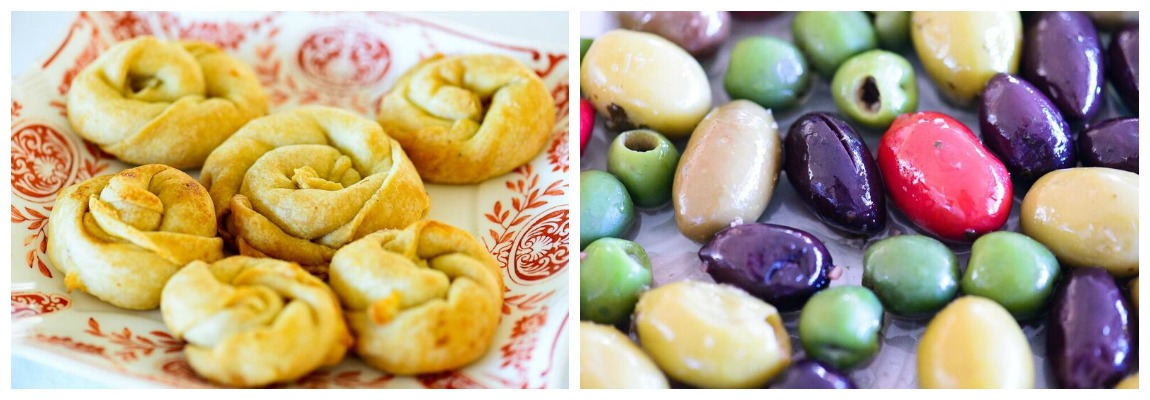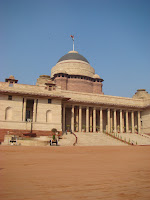It give me goosebumps walking through the halls of power and knowing that kings and queens, viceroys and vicerines have treaded the same paths steeped in history but also now so contemporary.
The elephants on the outer wall were designed by Charles Sargeant Jagger.
The magnificent gates in wrought Iron.
So it was with a real sense of excitiment that I spent my morning going around the splendid Rashtrapati Bhavan in Delhi - house and garden built by Lutyens to be the focal point of New Delhi on Raisina Hill.
It is not often that you can be in a setting like this with no one else in the backdrop.
Security is tight but the groups plentiful and we were lead by our tour guide to a splendid hall where as you walk in you see marble statues of George V and Queen Mary. Flanking them Lord Chelmsford Viceroy 1916-1921 and Lord Beresford. A room filled with large almost oversized portraits of Edwina and Mountbatten, Louis XV and other royals.
On the wall a wonderful quote from General Amherst, though I dont know the date :
"The emperor of China and I govern at least half the human race and yet we find time for breakfast"
Perhaps it was appropriate that the next stop was the Kitchen Museum to admire tables laid out for the Viceroys and the sets of Fluted Turquoise ( my favourite colour for china ) and the Star of India. Exquisite fine bone china with the necessary silverware and even elaborate picnic hampers on display.
Up through an internal courtyard where on the far side is a bronze statue of Lutyens, the great British architect who was responsible for building the Palace and North and South block a project that took 17 years to complete. He left such a legacy for us all to enjoy to this very day.
From there up to the grand Ashoka Hall.We entered through a 20ft high wooden door framed in gleeming bronze where the handle was a lion with a crown on its head, through the curtain of blood red with a delicate pattern of elephants and palm trees, so appropriate for the place.
It is massive, quite square, apparently with floorboards under the now existing carpet and was once used as the ballroom.Nowadays this is where we meet the politicians and the dignitaries whenever we are invited officially to the Rashtrapati Bhavan. A painted ceiling which takes your breath away and side paintings of equally fine scenes made in canvas depicting the King of Iran and various hunting scenes, with trains of elephants and camels with riders dressed in their finery.
I remember from my last visit noticing the fine but voluptuous contours of a Persian lady whose painting lies over the fireplace and thinking how unique she was to be there.
Adjoining the Ahoka hall are corridors which are built in the Mandir style of a Hindu temple. Lutyens was so aware of the country he was building for and the significance of the work he was creating.
One of these, leads to the Banqueting Hall which is a massive hall seating no less than 104 guests. Definitely larger than mine at home !
All along I was looking down at the fine marble but also up at the Art Nouveau polished bronze light fittings.Out of the windows the Moghul Gardens coming into their full glory.
The Durbar Hall was the old audience hall but now is where a large statue of Lord Buddha can be seen.This is the central dome that one can admire from the outside and it is complete with an oversized chandelier in Belgian Chrystal. The Dome was said to be inspired by the Pantheon and the Great Stupa at Sanchi.The Hall is built with coloured marble from all over India.We were lucky enough to have the doors of the palace open towards the front coutryard from where you can see the Ashoka bull dating back from the 3rd Century and in the distance the Star of India which never fails to impress. It is said that no steel was used to construct the Palace which was completed in 1929.
You can just see the splendid chandelier in the background.
The Star of India.
From there to the Museum full of the presents that visiting dignitaries bring the the current President and there is a great collection of old pictures from the Raj, (Lord and Lady Irwin (the first occupants of the Palace with Indian dignitaries being especially lovely) and some really notable presents. The Atmos Clock from Switzerland. Now there is a surprise ! The Sunflower that adorned the mortal remains of Ghandi the day he was shot, a model boat made from cloves, a present from the President of Indonesia which is fragrant to this day. The King's Chair from the Delhi Durbar of 1911-1912.
Finally to the South Block to see where the visiting dignitaries stay when they visit which overlooks the courtyard of fountains with cobra heads.Our tour took us to only a handful of the 340 rooms of this splendid Palace.
The Palace and the North and South Block all lit up after the Beating of the Retreat.
A grandeur that transcends time.





































